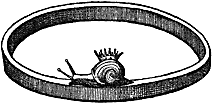
Early Cryptology

 N accurate assessment of a proposed cryptogram in the
work of "Shake-speare" can only take place when the evidence is judged in
the light of both the history and techniques of cryptology. Just as the
correctness of a solution to a mathematical problem must be determined by
one who is cognizant of relevant fields of mathematics, so it is necessary
to cast a question of cryptologic validity into appropriate contextual
relief. While a complete treatment of the history and methods of cryptology
is to be preferred to the brief outline given here, it is hoped that a
short review of pertinent information will help provide a sufficient basis
for appraising the Sonnets cryptogram solution demonstrated elsewhere. N accurate assessment of a proposed cryptogram in the
work of "Shake-speare" can only take place when the evidence is judged in
the light of both the history and techniques of cryptology. Just as the
correctness of a solution to a mathematical problem must be determined by
one who is cognizant of relevant fields of mathematics, so it is necessary
to cast a question of cryptologic validity into appropriate contextual
relief. While a complete treatment of the history and methods of cryptology
is to be preferred to the brief outline given here, it is hoped that a
short review of pertinent information will help provide a sufficient basis
for appraising the Sonnets cryptogram solution demonstrated elsewhere. |
|
Throughout the Middle Ages, ciphers were used by monks
"for scribal amusement, and the Renaissance knew from its study of such
classic texts as Suetonius that the ancient world had used ciphers for
political purposes" (@ Kahn 106). Around the
middle of the 13th century, the English monk Roger Bacon wrote "Concerning
the Marvelous Power of Art and of Nature and Concerning the Nullity of
Magic". He listed seven cipher methods and asserted that "a man is crazy
who writes a secret in any other way than one which will conceal it from
the vulgar" (@ Davis). Geoffrey Chaucer is considered "the outstanding English poet before Shakespeare and 'the first finder of our language' " (@ Britannica 3: 141). In The Equatorie of the Planetis, a supplement to his 1391 Treatise on the Astrolabe, Chaucer included six passages written in cipher. The cipher system consists of a substitution alphabet of symbols. The solution to the cryptogram shown below is: "This table servith for to entre in to the table of equacion of the mone on either side."
![[An
example of Chaucer's
cipher system]](gifs/chaucer.gif) Simeone de Crema's work at Mantua in 1401 used a key in which
|
![[Simeone
de Crema's cipher key, Mantua 1401]](gifs/cremakey.gif)
|
In 1474, Sicco Simonetta published Regulae ad
extrahendum litteras zifferatas sine exemplo, a short work which
stressed "methods of decipherment and afford[ed] considerable statistical
data" (@ Galland 171). In the context of the
present discussion, "the date of Simonetta's little essay on ciphers is
important, for it was the period when cryptography became the universal
practice, when simple ciphers developed into complicated cryptograms" (@ Thompson, qtd. in Galland 171). By the end of
the 15th century, "cryptology had become important enough for most states
to keep full-time cipher secretaries occupied in making up new keys,
enciphering and deciphering messages, and solving intercepted dispatches"
(@ Kahn
108-9). The popularity of cryptology was not limited to those who used it for military and diplomatic intelligence. The increasing popularity of cryptology in the 16th and 17th centuries is clearly attested to by the proliferation of books on the subject. So much was published that Duke August of Brunswick, author of the encyclopedic Cryptomenytices et Cryptographiae Libri IX, "had managed by 1622 to accumulate and analyze almost two hundred books on the subject of cryptology" (@ Strasser 51). In the preface of Cryptomenytices, he listed 187 authors of cryptographic works (45). |
|
The claim of a steganographically concealed cryptogram
in the Sonnets frontmatter must be viewed and judged in the context
of the popularity and availability of cryptographic information prior to
the publication of the Sonnets. Many books on cryptography were
published prior to the 1609 first edition of Shake-speares
Sonnets. A few of the more popular and important cryptographic
works are listed below (indicating only dates prior to 1609):
|
|
Clearly, there was sufficient discussion of cryptology
prior to the publication of the Sonnets to make it possible for an
author to use steganographic cryptography in a book. Furthermore, Bacon was
familiar with steganography and recommended its use. As he later wrote in
Advancement of Learning,
it is advisable to use ciphers which "may be managed without
suspition" because if
|
Contents |